The Living Stones of Sacsayhuamán (2014)
Género : Documental
Tiempo de ejecución : 40M
Director : Igor Alekseev
Sinopsis
Sacsayhuamán, an ancient citadel amidst the Peruvian Andes, is an architectural marvel. It was built more than 900 years ago, and no living person knows how such large rocks were fitted so perfectly into walls. This documentary takes us on a tour of Sacsayhuamán, offering a brief history of the site, and clues that may help to its understand how it was made. It was edited from photos and video taken in July 2012, when Russian geophysicists conducted soil research there, at the request of Peru's Ministry of Culture.
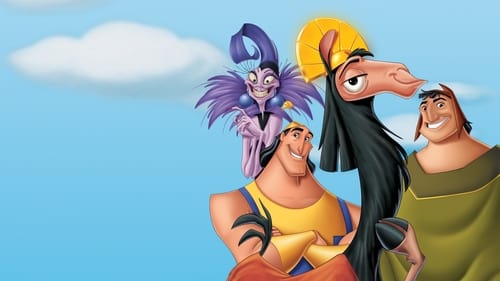
El arrogante y egoísta emperador Cuzco es traicionado y convertido en llama por la ambiciosa Yzma y su guardaespaldas Kronk. El emperador, que una vez lo tuvo todo, se verá abocado a confiar en un llano y simpático campesino llamado Pacha, para encontrarse a sí mismo.

Acostumbrada a la tranquilidad de Illinois donde tiene su residencia, la Dra. Kate Forester se traslada a un ajetreado hospital de Chicago. Lo que más la duele es desprenderse de su preciosa casa de madera con unas enormes ventanas que dan al lago. Pero se la alquila a un desconocido, al que deja una nota pidiéndole que le reenvíe el correo a la nueva dirección. Alex Wyler, el nuevo inquilino, es un frustrado arquitecto con mucho talento que tiene una conexión especial con la casa.

Cinco amigos, todos ex veteranos militares y antiguos operativos de las Fuerzas Especiales, se reúnen para planificar un asalto a una zona fronteriza poco habitada en Sudamérica. El objetivo: robar a un poderoso narcotraficante. Por primera vez en sus prestigiosas carreras, estos héroes anónimos asumen una peligrosa misión en su propio beneficio y no en el de su país. Pero cuando la situación sufre un giro inesperado y amenaza con salirse de control, desencadenará una serie de consecuencias imprevistas.
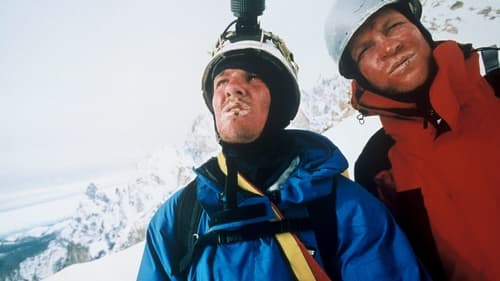
En 1985 dos amigos montañeros, Joe Simpson y Simon Yates, se encuentran escalando una montaña remota en los Andes -concretamente la cima del Siula Grande, un pico peruano de 21.000 pies de altura- cuando, cerca de la cumbre, uno de ellos se rompe una pierna. El otro intenta ayudarlo a bajar a un lugar seguro, pero las cosas no resultan tan fáciles.
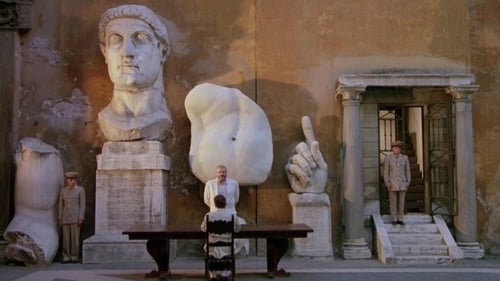
Un arquitecto norteamericano llega a Roma, acompañado de su esposa, con motivo de una exposición dedicada al artista francés del sigo XVIII Étienne-Louise Boullée. El arquitecto, a lo largo del tiempo, se obsesiona con unos tremendos dolores de estómago, convencido de que está relacionado con que su mujer está teniendo una aventura con otro colega italiano.
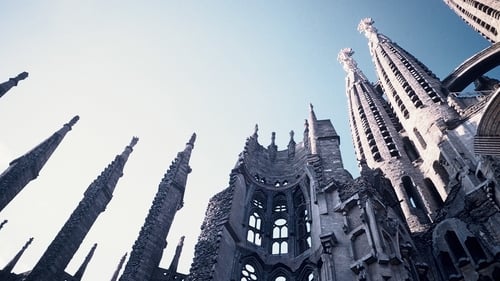
Entre los documentales de Teshigahara destaca uno realizado en 1984 sobre la vida del gran Antonio Gaudí (1852-1926) que, según los especialistas, dio origen a un auge sin precedentes en Japón de admiración e interés por la obra del arquitecto y escultor catalán. Un viaje a la arquitectura de Gaudí, incluyendo su obra maestra inacabada, la catedral de la Sagrada Familia, en Barcelona. (FILMAFFINITY)

The Richardson Olmsted Campus, a former psychiatric center and National Historic Landmark, is seeing new life as it undergoes restoration and adaptation to a modern use.

El explorador español Pizarro captura al dios-jefe inca Atahualpa y promete liberarlo con la entrega de un tesoro de oro. Pero Pizarro se encuentra dividido entre su deseo de conquista y su sentido del honor después de que la amistad y el respeto se desarrollan entre cautivo y captor.

Cuando la hermosa Leonor llega al estudio de arquitectura Borla y Asociados buscando a Nelson Jara, tanto Mario Borla como su socia Marta Hovart y Pablo Simó, el arquitecto más antiguo de la constructora, aseguran desconocer ese nombre por completo. Pero todos mienten. La verdad comienza a desentramarse a través de los recuerdos de Simó. A él le tocó llevar adelante el desagradable trabajo de lidiar con Nelson Jara, un indignado propietario del edificio colindante a una obra del estudio, damnificado por una grieta en la pared de su apartamento provocada por un error en la construcción. Pero el temor y el nerviosismo que provoca en los tres involucrados la llegada de Leonor y su pregunta “¿qué pasó con Nelson Jara?” evidencian algo mucho más oscuro y sospechoso.

El Demonio de los Andes, directed by Palito Ortega Matute, is based on the Andean myth of the Jarjacha, a demonic character set on destroying everyone it comes across. The legend of the Jajacha has been passed down from generation to generation. Ortega Matute spoke to people who were told about it by their parents, who had been told the tale by their parents. He also listened to accounts from people who say they’ve seen the demon with their own eyes.

In 1919 an art school opened in Germany that would change the world forever. It was called the Bauhaus. A century later, its radical thinking still shapes our lives today. Bauhaus 100 is the story of Walter Gropius, architect and founder of the Bauhaus, and the teachers and students he gathered to form this influential school. Traumatised by his experiences during the Great War, and determined that technology should never again be used for destruction, Gropius decided to reinvent the way art and design were taught. At the Bauhaus, all the disciplines would come together to create the buildings of the future, and define a new way of living in the modern world.
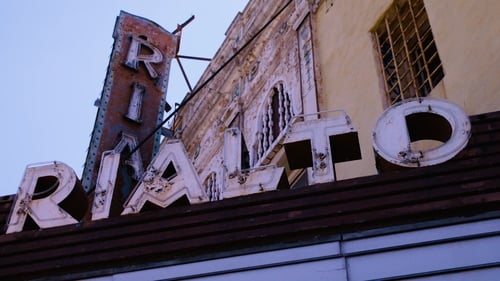
Celebrating the splendor and grandeur of the great cinemas of the United States, built when movies were the acme of entertainment and the stories were larger than life, as were the venues designed to show them. The film also tracks the eventual decline of the palaces, through to today’s current preservation efforts. A tribute to America’s great art form and the great monuments created for audiences to enjoy them in.
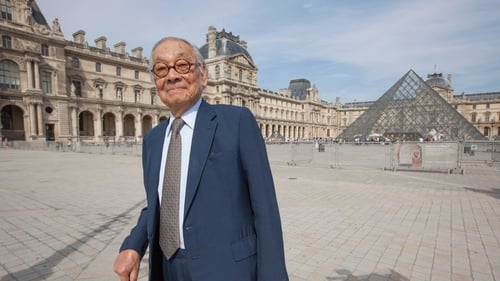
Architect I.M. Pei speaks about his famous works, such as the addition to the Louvre in Paris, the East Wing of the National Gallery of Art in Washington, D.C., and the Meyerson Symphony Center in Dallas, Texas. Footage of these projects shows both interiors and exteriors. Various other experts comment on the impact and importance of Pei's work.

Architect, engineer, geometrician, cartographer, philosopher, futurist, inventor of the famous geodesic dome and one of the most brilliant thinkers of his time. Fuller was renowned for his comprehensive perspective on the world's problems. For more than five decades he developed pioneering solutions reflecting his commitment to the potential of innovative design to create technology that does "more with less" and thereby improve human lives. He spent much of his life traveling the world lecturing and discussing his ideas with thousands of audiences. Now more relevant than ever, this film captures Fuller's ideas and thinking told in his own words.

Documentary presenting the theory and application of the Theology of Liberation via interviews to priests from humble parishes in the slums of Lima. A fruitful labor of a Catholic Church sector committed to address social issues.

This captivating exploration of Alvar Aalto, the defining figure in Scandic design and one of Europe's greatest modern architects, focuses on his remarkable and loving partnership with wife, Aino. Theirs was a profoundly humanist vision that put people at the centre of design, and ranged from work in furniture design through to huge architectural projects. They mixed with, and influenced, major figures of modernist art and design including Le Corbusier, Gropius, Moholy-Nagy, and Frank Lloyd Wright. Come on a cinematic tour of their iconic buildings all over the world, from a library in Russia, a student dormitory at MIT, an art collector's private house near Paris, to a pavilion in Venice. Narrated by experts in the field and featuring never before seen archive footage, Aalto tells the love story of an extraordinary couple with a great passion for human scale architecture.

This documentary is an offbeat "road movie" in which acclaimed documentarian Heddy Honigmann travels with, and thereby discovers the stories of, taxi drivers in Lima. In the early 1990s, in response to Peru's inflationary economy and a government destabilized by corruption and Shining Path terrorism, many middle-class professionals used their own cars to moonlight as taxi drivers in order to weather the financial crisis.

Tadao Ando (b.1941) is a world-renowned architect, and a recipient of the Pritzker Architecture Prize. His calm, minimalist architecture with elegant concrete designs reflects the Zen principle of simplicity. In the film he reveals the experience a building should evoke, as he discusses a number of iconic designs, such as The Row House and The Church of Light.

A core group of architects embraced the West Coast from Vancouver to LA with its particular geography and values and left behind a legacy of inspired dwellings. Today, architects celebrate the influence established by their predecessors.

Join a team of archaeologists and the Discovery Channel in an investigation into the mysterious lines of the Nazca region in Peru. Created by the Nazcas, these huge sculptures are only visible from the sky and depict people, animal, geometric forms, and strange creatures. See a premier exhibition of pottery and textiles, musical instruments, and mummies from this long-forgotten, pre-Columbian civilization and visit Cahuachi, a buried city of pyramids and ceremonial buildings which may have once been the religious capital of the Nazca people
















